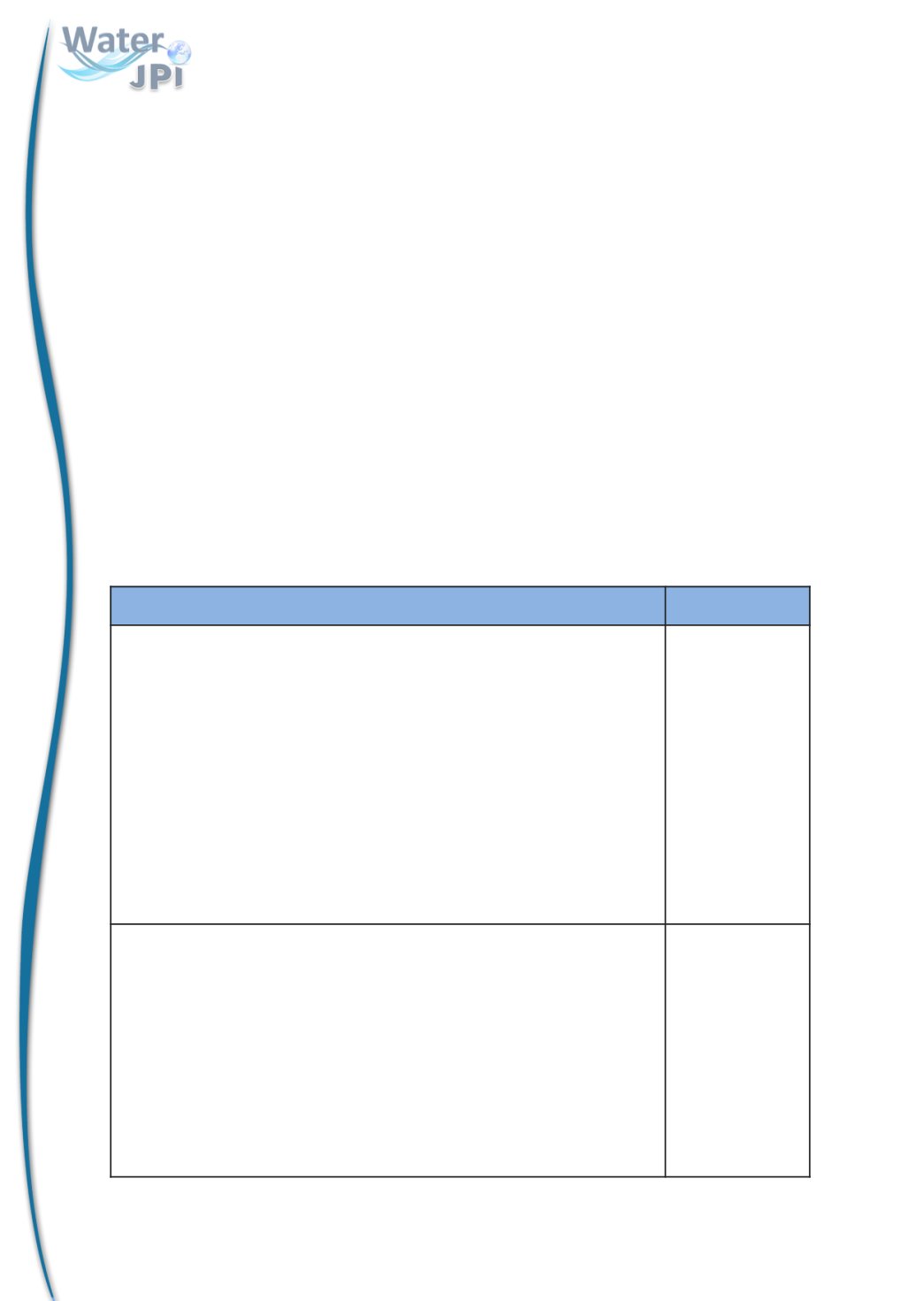
3.2.2 Minimising Risks Associated
with Water Infrastructures and Natural Hazards
Current global changes (such as climate change and urban sprawl) demand innovative practices
to minimise the risks associated with: (i) water distribution and storage facilities in urban areas;
and (ii) natural hazards (floods and water scarcity as well as associated risks for citizens’ life
and assets). Protecting the capacity of urban water networks to deliver water to citizens with
target quality standards is a major goal for both European and non-European countries. Urban
water networks concentrate large public investments, guarantee the right to water access and
represent a very important niche for multinational European companies of all sizes. Research
can protect citizens, investments and businesses by supporting innovative management and
decision-making. Urban water natural hazards can be exemplified by urban floods and water
scarcity. Their devastating power will be limited through multidisciplinary research exploring
the areas of risk prevention and management. A variety of scientific and technological areas
will be explored to put research results at the service of citizens’ life and assets. The two as-
pects of this subtheme (infrastructure and natural hazards) may be combined in specific topics.
For instance, the performance of storm water retention ponds could be improved, including
the management of contaminants, and overflows in advanced wastewater treatment facilities
could be managed when affected by floods.
Currently Identified Needs
RDI needs and rel ated ob jecti ves
T ime frame
RDI needs and rel ated ob jecti ves
T ime frame
2.2.1. Expl oit ing ageing urban water systems for dependable
and cost -effecti ve servi ce
Developing methodologies and technologies for the effective monitoring
and control of urban water networks and storm water systems.
Enhancing the resilience of urban water systems (i.e. pipeline networks,
drinking-water reservoirs, pumping stations and large water treatment
plants).
Improving the efficient use of state-of-the-art monitoring and control
systems.
Developing decision-support systems (DSS) for long-term rehabilitation
decisions based on the time evolution of system conditions.
Improving data-management routines.
L ink wi th 3.1.1.
Long
2 .2. 2. Progress i ng t owards urban f l ood -proof c i t i es .
Li nk
with 1.3.2 and 1.3. 3.
Developing and setting up technological and managerial solutions to
urban floods.
Producing integrated systems for the prediction and risk management of
urban floods (overflows in advanced wastewater treatment facilities,
urban hydrology, surrounding river flow, hydrodynamics, internet of
things, drainage design, social sciences and climate change analysis).
Developing a smart city approach to integrate sensors and public infor-
mation services designed for all event phases.
Link with 3.1.1.
Short
28


